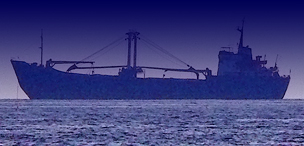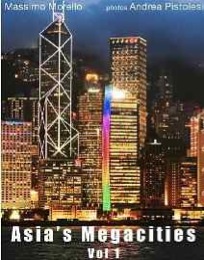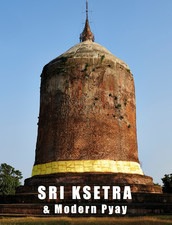The illusions of poverty
12/05/14 16:32 Filed in: Logbook
Women sitting on their haunches, wearing colourful saris. A position of congenital elegance that many Western women try in vain to assume.
In Bangladesh it is one of the causes of uterine prolapse. Following early marriage, numerous pregnancies, or working in the fields.
They sit like this on the “Rongdhonu”, the ship that Greenpeace gave to Friendship, an organisation that aims to provide medical assistance in the poorest and most isolated areas of one of the world's poorest and most isolated countries. One of these areas, the very poorest and most isolated, is in the Bay of Bengal, where the Ganges and the Brahmaputra meet in an immense delta of swamps and lowlands. Regularly devastated by cyclones and submerged by seawater. A wet world where drinking water is hard to find.
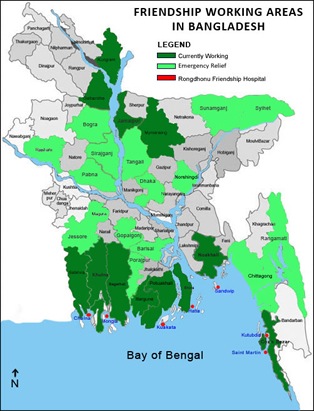
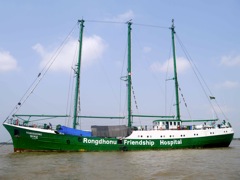
Some of these women are lucky: they are being operated on by a team of doctors from the United States. Others less so. Such as the one who perhaps has cancer – she doesn't know for sure, she may not find out until it is too late. She doesn't seem upset. In a place where the most common illness can be fatal, cancer is just another sickness. I watch her as she returns to land on board a nouka, a beaten up fishing boat, which ferries its load of women in saris between the shore and the hospital ship. As the distance grows, the scene begins to resemble a Gauguin painting. In places such as this, perspective, or distance, is no longer a point of view; it creates an illusory paradox.
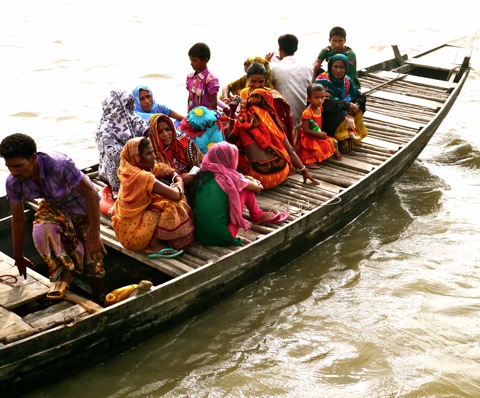
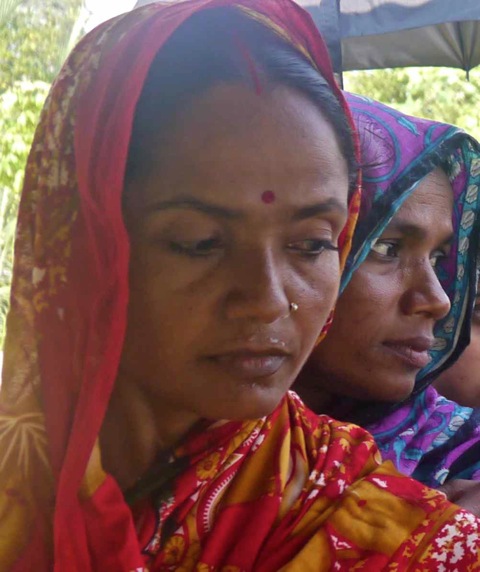
Poverty creates beauty and pure beauty is made by poverty. Such as the woman dragging a net as she wades in the river. You don't feel the weight of the net or the mud on the riverbed, the effort that day after day causes her pelvic organs to collapse. You only see a colour reflected in the current.
On the deck of the Rongdhonu, though, you are up close: you smell the same smells, feel the same heat, see the women waiting in line or being stretchered back on deck after an operation: asleep, they are placed on a folding bed by other women because the men, according to the rules of Islam, cannot touch them. They will convalesce here, sheltered by a sheet of canvas, for two or three days. Under one of the beds, a catheter bag rests next to a pan of lentil dahl.

It's yet another paradox: they have been operated on by a top team, which they may remember as if it were a dream, but are then immediately returned to their natural human condition.
The same happens, in reverse, for the all-female American doctors and nurses. They move between an operating room that, though limited, meets Western standards, and a gangway on the ship that looks increasingly like an old tramp steamer as the days pass. But they have no time to notice the contrast. These women are the demonstration that the impact between cultures can generate positive energy.
The mirages disappear as night falls. It's a quiet time. The stars are bright, with no land pollution to dim them. The air cools. A village atmosphere is recreated on deck: the patients are cared for by their relatives, some eat, some lie on a mat on the deck with their children beside them. The few men present murmur quietly amongst themselves.
On the bridge, the captain and a few members of the crew pray towards the west. The engineer brings me a dark, sweet tea, and I offer him a cigarette in return. He tells me that there are pirates further south, amongst the Sundarbans mangroves. Just down current from there, Bani Shanta, a strip of mud and huts, is home to about a hundred prostitutes. Both the pirates and the prostitutes rely on the traffic in the delta: the cargo ships carrying goods not worth the insurance and crews that are only valued by the prostitutes.

"But it is beautiful here," concludes the engineer, throwing the last of my cigarettes into the river.
It truly is beautiful, but the nocturnal silence doesn't last. A storms rips through two hours later. The wind could well tear away the canvas sheltering the patients. It should be taken down, but the rain is torrential. The women and their families have to be taken indoors. They gather in any available space. The day's heat given off by the sheet metal stagnates. A few fans try to disperse it, but they soon stop because the on-board generator overloads.
This is no cyclone, or even a mid-monsoon tempest. It's just a storm, but it makes you understand the impact of a violent climate when all you have over your head is a bit of canvas or the roof of a hut, while the ground turns to mud. Big natural disasters kill tens of thousands of people in a short space of time, but this kind of weather also kills - just more slowly. It destroys you day by day, due to illness or the inability to repay a loan, which you may have taken out to set up a shrimp farm that was washed away by high tides.
On board the Rongdhonu, I find an article I set aside for this trip and then forgot. It is entitled Poor Choices. It's a review-reflection on certain essays that analyse the roots of extreme poverty, the condition of a billion people living on little more than a dollar a day. But also the inadequacy of our world to tackle the problem. “Poverty presents both a moral and an intellectual challenge,” I read. And while I read, I realise that the second is the most difficult to tackle. We have to overcome conceptual and cultural barriers that have almost become a moral law. Like the support for certain local NGOs used to enter politics. Or the mystical support for the microcredit system. We have to listen to Shushuma, a sixty-year-old woman who got a loan of 10,000 taka (about 95 euro) from the Grameen Bank at an interest rate of 18%. She gave the money to her son, for that shrimp farm.
In Bangladesh it is one of the causes of uterine prolapse. Following early marriage, numerous pregnancies, or working in the fields.
They sit like this on the “Rongdhonu”, the ship that Greenpeace gave to Friendship, an organisation that aims to provide medical assistance in the poorest and most isolated areas of one of the world's poorest and most isolated countries. One of these areas, the very poorest and most isolated, is in the Bay of Bengal, where the Ganges and the Brahmaputra meet in an immense delta of swamps and lowlands. Regularly devastated by cyclones and submerged by seawater. A wet world where drinking water is hard to find.


Some of these women are lucky: they are being operated on by a team of doctors from the United States. Others less so. Such as the one who perhaps has cancer – she doesn't know for sure, she may not find out until it is too late. She doesn't seem upset. In a place where the most common illness can be fatal, cancer is just another sickness. I watch her as she returns to land on board a nouka, a beaten up fishing boat, which ferries its load of women in saris between the shore and the hospital ship. As the distance grows, the scene begins to resemble a Gauguin painting. In places such as this, perspective, or distance, is no longer a point of view; it creates an illusory paradox.


Poverty creates beauty and pure beauty is made by poverty. Such as the woman dragging a net as she wades in the river. You don't feel the weight of the net or the mud on the riverbed, the effort that day after day causes her pelvic organs to collapse. You only see a colour reflected in the current.
On the deck of the Rongdhonu, though, you are up close: you smell the same smells, feel the same heat, see the women waiting in line or being stretchered back on deck after an operation: asleep, they are placed on a folding bed by other women because the men, according to the rules of Islam, cannot touch them. They will convalesce here, sheltered by a sheet of canvas, for two or three days. Under one of the beds, a catheter bag rests next to a pan of lentil dahl.

It's yet another paradox: they have been operated on by a top team, which they may remember as if it were a dream, but are then immediately returned to their natural human condition.
The same happens, in reverse, for the all-female American doctors and nurses. They move between an operating room that, though limited, meets Western standards, and a gangway on the ship that looks increasingly like an old tramp steamer as the days pass. But they have no time to notice the contrast. These women are the demonstration that the impact between cultures can generate positive energy.
The mirages disappear as night falls. It's a quiet time. The stars are bright, with no land pollution to dim them. The air cools. A village atmosphere is recreated on deck: the patients are cared for by their relatives, some eat, some lie on a mat on the deck with their children beside them. The few men present murmur quietly amongst themselves.
On the bridge, the captain and a few members of the crew pray towards the west. The engineer brings me a dark, sweet tea, and I offer him a cigarette in return. He tells me that there are pirates further south, amongst the Sundarbans mangroves. Just down current from there, Bani Shanta, a strip of mud and huts, is home to about a hundred prostitutes. Both the pirates and the prostitutes rely on the traffic in the delta: the cargo ships carrying goods not worth the insurance and crews that are only valued by the prostitutes.

"But it is beautiful here," concludes the engineer, throwing the last of my cigarettes into the river.
It truly is beautiful, but the nocturnal silence doesn't last. A storms rips through two hours later. The wind could well tear away the canvas sheltering the patients. It should be taken down, but the rain is torrential. The women and their families have to be taken indoors. They gather in any available space. The day's heat given off by the sheet metal stagnates. A few fans try to disperse it, but they soon stop because the on-board generator overloads.
This is no cyclone, or even a mid-monsoon tempest. It's just a storm, but it makes you understand the impact of a violent climate when all you have over your head is a bit of canvas or the roof of a hut, while the ground turns to mud. Big natural disasters kill tens of thousands of people in a short space of time, but this kind of weather also kills - just more slowly. It destroys you day by day, due to illness or the inability to repay a loan, which you may have taken out to set up a shrimp farm that was washed away by high tides.
On board the Rongdhonu, I find an article I set aside for this trip and then forgot. It is entitled Poor Choices. It's a review-reflection on certain essays that analyse the roots of extreme poverty, the condition of a billion people living on little more than a dollar a day. But also the inadequacy of our world to tackle the problem. “Poverty presents both a moral and an intellectual challenge,” I read. And while I read, I realise that the second is the most difficult to tackle. We have to overcome conceptual and cultural barriers that have almost become a moral law. Like the support for certain local NGOs used to enter politics. Or the mystical support for the microcredit system. We have to listen to Shushuma, a sixty-year-old woman who got a loan of 10,000 taka (about 95 euro) from the Grameen Bank at an interest rate of 18%. She gave the money to her son, for that shrimp farm.
0 Comments


